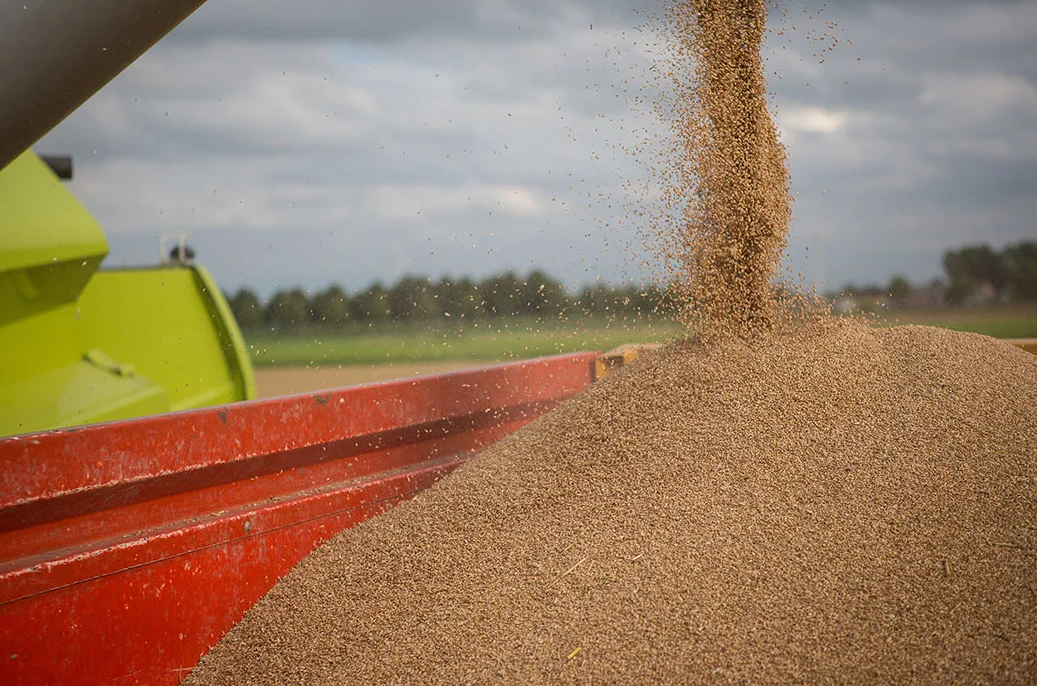Rabat – Morocco’s central bank, Bank Al-Maghrib (BAM), expects a small increase in the country’s grain harvest this year, though the yield will remain below government expectations.
Speaking at a press conference on Tuesday, the Governor of Bank Al-Maghrib, Abdellatif Jouahri, estimated that Morocco’s grain harvest for the current season will reach 35 million quintals. This represents a slight improvement from last year’s 31.2 million quintals but remains significantly lower than the 55.1 million quintals recorded in the 2022-2023 season.
Bank Al-Maghrib forecasts a 2.5% rise in the agricultural sector’s added value this year, thanks to this anticipated grain harvest and an expected increase in non-grain agricultural production.
However, the central bank has revised its earlier predictions. In December, it had estimated a potential harvest of 50 million quintals but had warned that achieving this depended on favorable rainfall. BAM had noted at the time that well-distributed rainfall between December and March could allow the harvest to exceed both the bank’s and the government’s forecasts.
Meanwhile, the government had set a more optimistic target of 70 million quintals in its finance law projections.
The country has seen significant rain and snowfall in recent weeks, with levels of dam reservoirs rising. Reservoirs across Morocco reached a 35% filling rate compared to 26% during the same period last year. However, the reservoir filling rate remains way below the 68% recorded in 2018.
The heavy rainfall has given hope to farmers, particularly those growing autumn grains like wheat, durum wheat, and barley.
While many experts recognized the relief that the recent rainfall represents, they warned that it is not enough to resolve Morocco’s long-term water crisis.
“Morocco has always been a country of drought. This is structural, not something new. It existed before the establishment of the Moroccan state, before the Idrisid dynasty,” Mohammed-Said Karrouk, professor of climatology at Hassan II University of Casablanca, told MWN.
He pointed out that the heaviest rainfall occurred in northern regions, where water shortages were less severe, while central and southern areas, which are more affected by drought, received less rain and continued to struggle.
Speaking at a press conference on Tuesday, the Governor of Bank Al-Maghrib, Abdellatif Jouahri, estimated that Morocco’s grain harvest for the current season will reach 35 million quintals. This represents a slight improvement from last year’s 31.2 million quintals but remains significantly lower than the 55.1 million quintals recorded in the 2022-2023 season.
Bank Al-Maghrib forecasts a 2.5% rise in the agricultural sector’s added value this year, thanks to this anticipated grain harvest and an expected increase in non-grain agricultural production.
However, the central bank has revised its earlier predictions. In December, it had estimated a potential harvest of 50 million quintals but had warned that achieving this depended on favorable rainfall. BAM had noted at the time that well-distributed rainfall between December and March could allow the harvest to exceed both the bank’s and the government’s forecasts.
Meanwhile, the government had set a more optimistic target of 70 million quintals in its finance law projections.
The country has seen significant rain and snowfall in recent weeks, with levels of dam reservoirs rising. Reservoirs across Morocco reached a 35% filling rate compared to 26% during the same period last year. However, the reservoir filling rate remains way below the 68% recorded in 2018.
The heavy rainfall has given hope to farmers, particularly those growing autumn grains like wheat, durum wheat, and barley.
While many experts recognized the relief that the recent rainfall represents, they warned that it is not enough to resolve Morocco’s long-term water crisis.
“Morocco has always been a country of drought. This is structural, not something new. It existed before the establishment of the Moroccan state, before the Idrisid dynasty,” Mohammed-Said Karrouk, professor of climatology at Hassan II University of Casablanca, told MWN.
He pointed out that the heaviest rainfall occurred in northern regions, where water shortages were less severe, while central and southern areas, which are more affected by drought, received less rain and continued to struggle.

